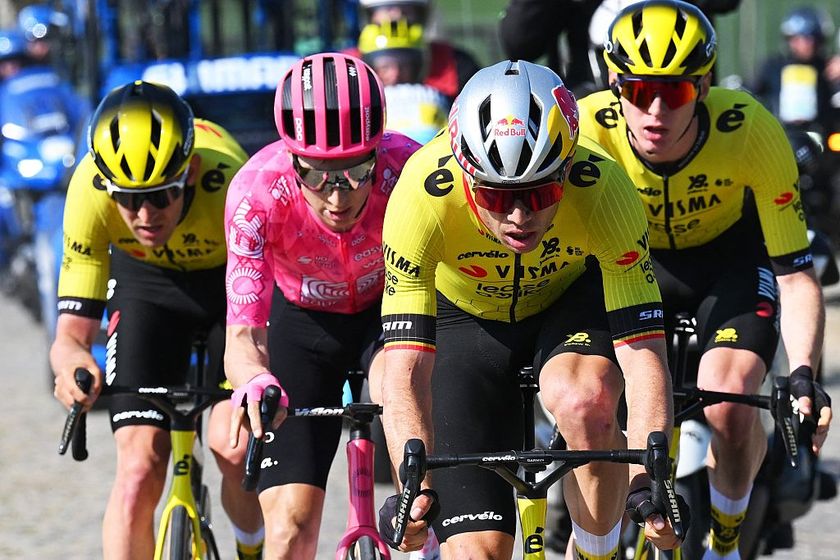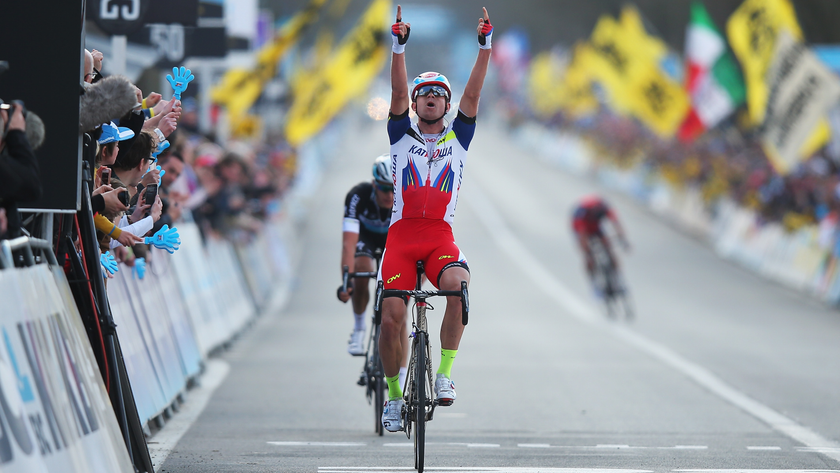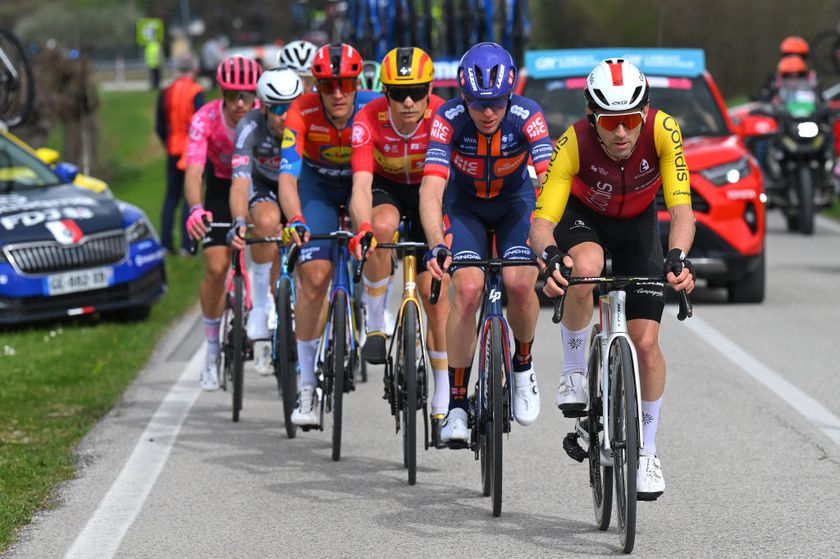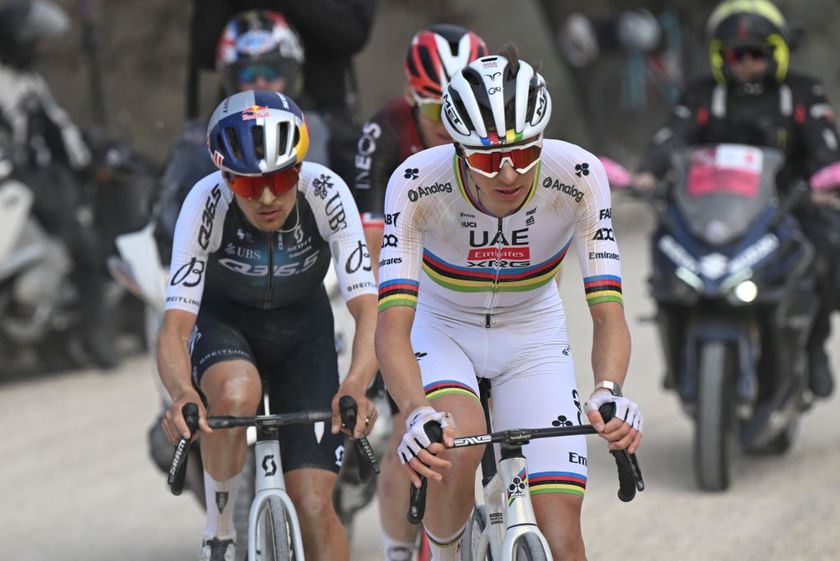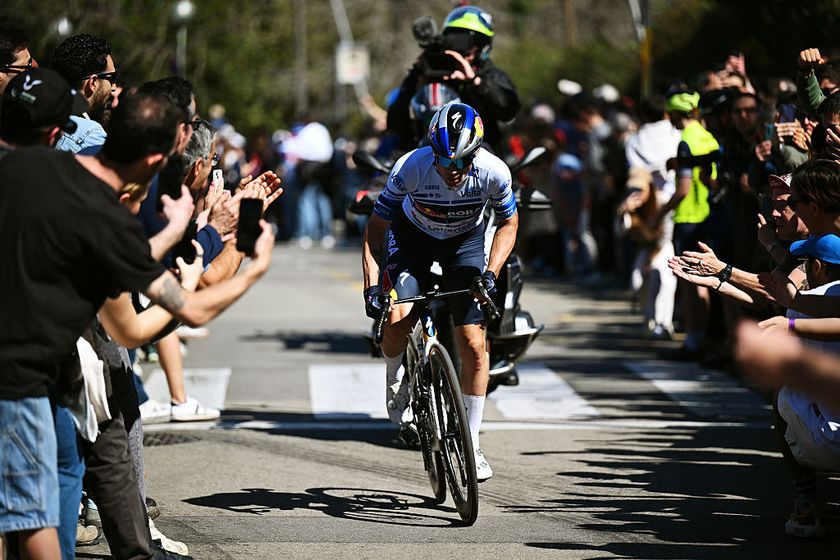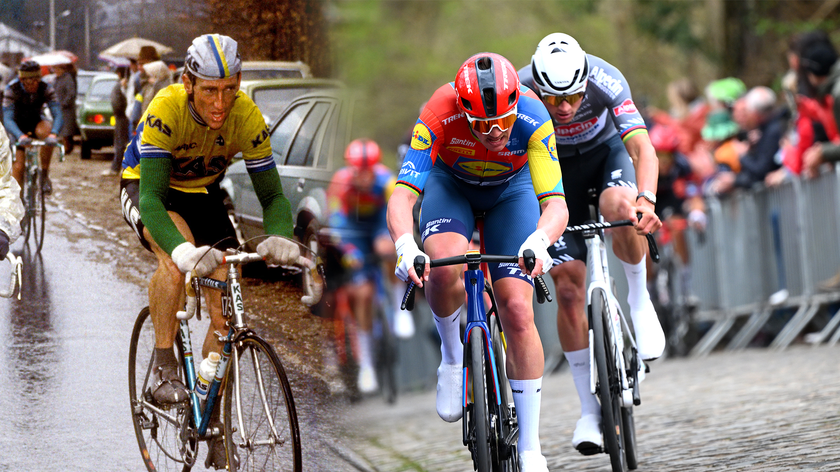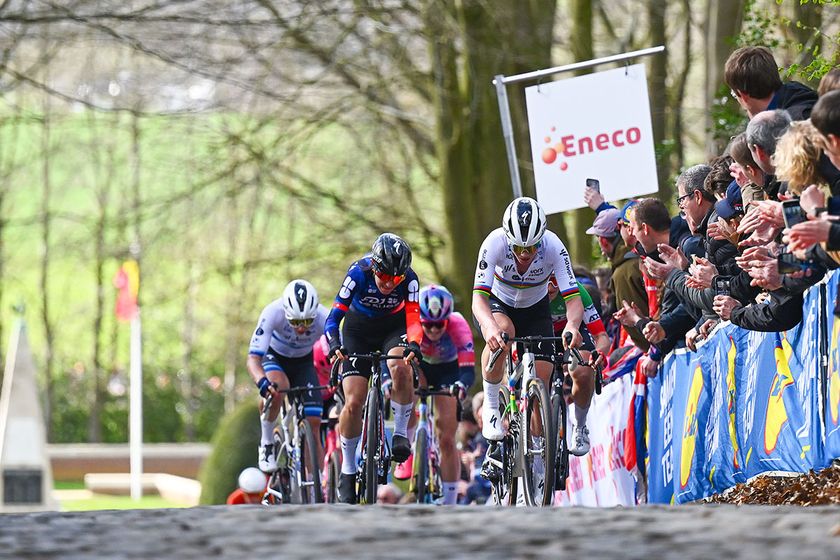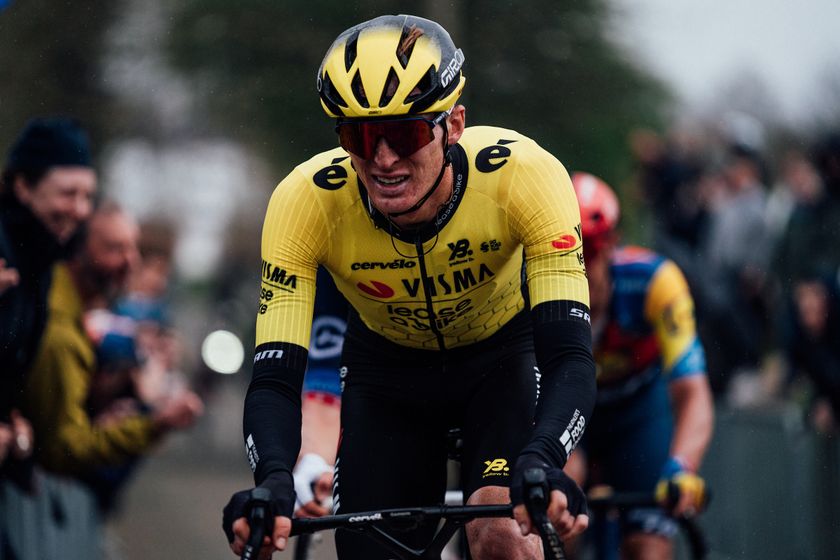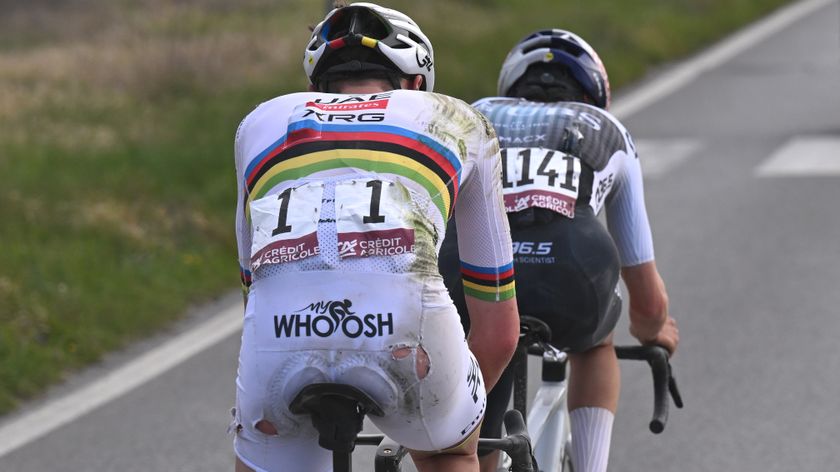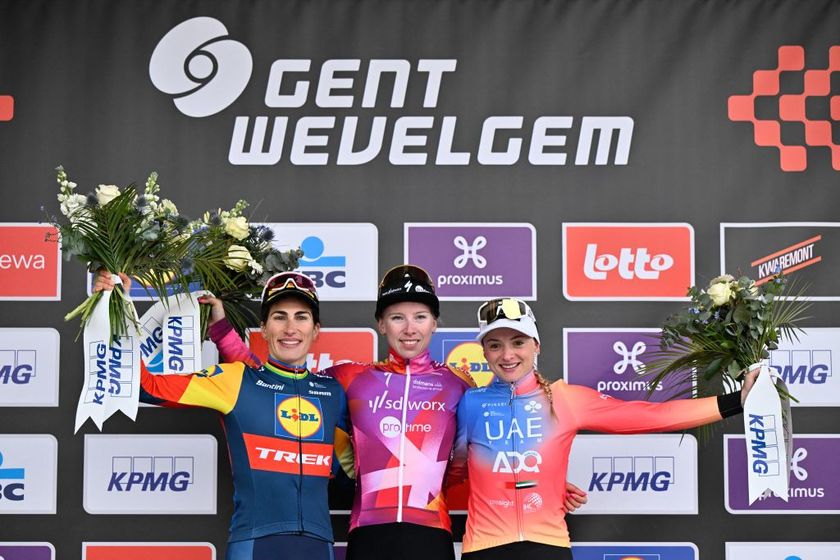Fitness questions and answers for February 21, 2005
Got a question about fitness, training, recovery from injury or a related subject? Drop us a line at...
Form & Fitness Q & A
Got a question about fitness, training, recovery from injury or a related subject? Drop us a line at fitness@cyclingnews.com. Please include as much information about yourself as possible, including your age, sex, and type of racing or riding. Due to the volume of questions we receive, we regret that we are unable to answer them all.
Carrie Cheadle, MA (www.carriecheadle.com) is a Sports Psychology consultant who has dedicated her career to helping athletes of all ages and abilities perform to their potential. Carrie specialises in working with cyclists, in disciplines ranging from track racing to mountain biking. She holds a bachelors degree in Psychology from Sonoma State University as well as a masters degree in Sport Psychology from John F. Kennedy University.
Dave Palese (www.davepalese.com) is a USA Cycling licensed coach and masters' class road racer with 16 years' race experience. He coaches racers and riders of all abilities from his home in southern Maine, USA, where he lives with his wife Sheryl, daughter Molly, and two cats, Miranda and Mu-Mu.
Kelby Bethards, MD received a Bachelor of Science in Electrical Engineering from Iowa State University (1994) before obtaining an M.D. from the University of Iowa College of Medicine in 2000. Has been a racing cyclist 'on and off' for 20 years, and when time allows, he races Cat 3 and 35+. He is a team physician for two local Ft Collins, CO, teams, and currently works Family Practice in multiple settings: rural, urgent care, inpatient and the like.
Fiona Lockhart (www.trainright.com) is a USA Cycling Expert Coach, and holds certifications from USA Weightlifting (Sports Performance Coach), the National Strength and Conditioning Association (Certified Strength and Conditioning Coach), and the National Academy for Sports Nutrition (Primary Sports Nutritionist). She is the Sports Science Editor for Carmichael Training Systems, and has been working in the strength and conditioning and endurance sports fields for over 10 years; she's also a competitive mountain biker.
Eddie Monnier (www.velo-fit.com) is a USA Cycling certified Elite Coach and a Category II racer. He holds undergraduate degrees in anthropology (with departmental honors) and philosophy from Emory University and an MBA from The Wharton School of Business.
Eddie is a proponent of training with power. He coaches cyclists (track, road and mountain bike) of all abilities and with wide ranging goals (with and without power meters). He uses internet tools to coach riders from any geography.
Get The Leadout Newsletter
The latest race content, interviews, features, reviews and expert buying guides, direct to your inbox!
David Fleckenstein, MPT (www.physiopt.com) is a physical therapist practicing in Boise, ID. His clients have included World and U.S. champions, Olympic athletes and numerous professional athletes. He received his B.S. in Biology/Genetics from Penn State and his Master's degree in Physical Therapy from Emory University. He specializes in manual medicine treatment and specific retraining of spine and joint stabilization musculature. He is a former Cat I road racer and Expert mountain biker.
Since 1986 Steve Hogg (www.cyclefitcentre.com) has owned and operated Pedal Pushers, a cycle shop specialising in rider positioning and custom bicycles. In that time he has positioned riders from all cycling disciplines and of all levels of ability with every concievable cycling problem.They include World and National champions at one end of the performance spectrum to amputees and people with disabilities at the other end.
Current riders that Steve has positioned include Davitamon-Lotto's Nick Gates, Discovery's Hayden Roulston, National Road Series champion, Jessica Ridder and National and State Time Trial champion, Peter Milostic.
Pamela Hinton has a bachelor's degree in Molecular Biology and a doctoral degree in Nutritional Sciences, both from the University of Wisconsin-Madison. She did postdoctoral training at Cornell University and is now an assistant professor of Nutritional Sciences at the University of Missouri-Columbia where she studies the effects of iron deficiency on adaptations to endurance training and the consequences of exercise-associated changes in menstrual function on bone health.
Pam was an All-American in track while at the UW. She started cycling competitively in 2003 and is the defending Missouri State Road Champion. Pam writes a nutrition column for Giana Roberge's Team Speed Queen Newsletter.
Dario Fredrick (www.wholeathlete.com) is an exercise physiologist and head coach for Whole Athlete™. He is a former category 1 & semi-pro MTB racer. Dario holds a masters degree in exercise science and a bachelors in sport psychology.
Scott Saifer (www.wenzelcoaching.com) has a Masters Degree in exercise physiology and sports psychology and has personally coached over 300 athletes of all levels in his 10 years of coaching with Wenzel Coaching.
Kendra Wenzel (www.wenzelcoaching.com) is a head coach with Wenzel Coaching with 17 years of racing and coaching experience and is coauthor of the book Bike Racing 101.
Steve Owens (www.coloradopremiertraining.com) is a USA Cycling certified coach, exercise physiologist and owner of Colorado Premier Training. Steve has worked with both the United States Olympic Committee and Guatemalan Olympic Committee as an Exercise Physiologist. He holds a B.S. in Exercise & Sports Science and currently works with multiple national champions, professionals and World Cup level cyclists.
Through his highly customized online training format, Steve and his handpicked team of coaches at Colorado Premier Training work with cyclists and multisport athletes around the world.
Brett Aitken (www.cycle2max.com) is a Sydney Olympic gold medalist. Born in Adelaide, Australia in 1971, Brett got into cycling through the cult sport of cycle speedway before crossing over into road and track racing. Since winning Olympic gold in the Madison with Scott McGrory, Brett has been working on his coaching business and his www.cycle2max.com website.
Richard Stern (www.cyclecoach.com) is Head Coach of Richard Stern Training, a Level 3 Coach with the Association of British Cycling Coaches, a Sports Scientist, and a writer. He has been professionally coaching cyclists and triathletes since 1998 at all levels from professional to recreational. He is a leading expert in coaching with power output and all power meters. Richard has been a competitive cyclist for 20 years
Andy Bloomer (www.cyclecoach.com) is an Associate Coach and sport scientist with Richard Stern Training. He is a member of the Association of British Cycling Coaches (ABCC) and a member of the British Association of Sport and Exercise Sciences (BASES). In his role as Exercise Physiologist at Staffordshire University Sports Performance Centre, he has conducted physiological testing and offered training and coaching advice to athletes from all sports for the past 4 years. Andy has been a competitive cyclist for many years.
Michael Smartt (www.cyclecoach.com) is an Associate Coach with Richard Stern Training. He holds a Masters degree in exercise physiology and is USA Cycling Expert Coach. Michael has been a competitive cyclist for over 10 years and has experience coaching road and off-road cyclists, triathletes and Paralympians.
Kim Morrow (www.elitefitcoach.com) has competed as a Professional Cyclist and Triathlete, is a certified USA Cycling Elite Coach, a 4-time U.S. Masters National Road Race Champion, and a Fitness Professional.
Her coaching group, eliteFITcoach, is based out of the Southeastern United States, although they coach athletes across North America. Kim also owns MyEnduranceCoach.com, a resource for cyclists, multisport athletes & endurance coaches around the globe, specializing in helping cycling and multisport athletes find a coach.
Torn hamstring comeback
Unequal leg length solutions
Another Crank length case
Walking as training
Training and Sickness
Torn hamstring comeback
I had a slow-speed crash nearly two weeks ago where I put my foot down after I locked handlebars with another rider at an intersection, and the other rider fell into me causing my leg to slip out and me to fall. The result was a torn hamstring. I had dark bruising from my knee to the top of my leg, but fortunately did not completely rupture the hamstring or tear (at least significantly - I did not get an MRI) any tendons. Right now I am wondering when I can get back on the bike and once I do, when to know how much riding is too much.
For the first week, I could not lift my leg enough to turn over the pedals unless I was sitting upright (hands off the bars on the trainer). I rode for 30 minutes without pain, but was in excruciating pain for two days after that. I got wise and spent the week lying on the sofa with ice on the leg, doing gentle stretching and getting massage but no activity and no more riding! I still cannot tie my shoes, but I tried, and I can pedal the bike almost comfortably with my hands on the bars. Can I ride? Of course the physical therapist says to wait, but I can see my season slipping away from me! I just starting training again on January 1 after breaking my arm, and not being able to ride is driving me crazy, especially since there's very little else I can do to stay fit. Any advice?
Laura Weislo
Raleigh, NC
Laura,
Unequal leg length solutions
I have an approximate leg length difference of about 1cm. I've heard two different trains of thought; either building up the cleat by the difference on the short leg versus building up half the difference. Which is the correct version, and why?
David Padula
Dave,
Another Crank length case
I find the ongoing discussions about bike fit very interesting. Last year I began having slight, somewhat vague glitches, which I knew had to be related to my position. At the end of the year, the vagueness went away and problems became very noticeable. (Chafing, a very sore left shoulder after a ride of more than 20 miles, occasional soreness in the left knee usually in the rear, but a few times in the front, sore upper back etc.)
I had tried all the regular formulas - various seat height measurement theories, KOPS. I used shims to correct what I had believed to be a slight leg length discrepancy (a wild idea I arrived at when measured for a shirt; one arm 4mm longer than the other), changed the angle of my seat slightly. I then read and followed the advice given here, especially the method for determining seat set back as well as purchasing and using the Kit Laughin stretching book. The latter were most useful and helped a bit, especially the stretching. (However, once I began stretching, other pains arose as I became more flexible.)
In the end, I still was not fully comfortable. I couldn't see a good fit specialist, because the ones I have heard or read of in Japan are using strictly formula-based approaches - some formulas are absurdly complex and precise.
Around the start of the year, I found a good deal on a Dura Ace crankset. I had been using 170 cranks (my inseam is 82mm, I am about 176cm tall.) The new ones were 175mm, and although I worried that they may be too long and preferred a set in 172.5, the deal was so good that I took a chance.
I have now used them for over 600 miles and they have done so much to improve the feel and comfort of riding, that I am hesitant to believe it. I keep waiting for pains or problems. For the first week, the only thing I changed was the crankset. I did not even lower the seat. After that I lowered it in stages to a total of about 2.5mm. I also moved my seat back about 1 mm as it seemed that I felt very slightly restricted. Other than that and straightening my seat back out, everything is the same.
For the first time, I feel that I can apply power throughout most of my pedal stroke. Before, I would occasionally follow the advice to imagine you were scraping mud off your shoe at the bottom of the stroke to ensure you were getting power on more of the stroke. That was always uncomfortable on my knees and I couldn't really do that for long. But now, I don't need to. I can feel that I am applying more power throughout the stroke. As a matter of fact, my hamstrings were sore the first few times after riding these, whereas before, it was always my quads. When I am somewhat sore from a ride now, it is not concentrated on any one area.
So my completely unscientific conclusion is that a large part of my problems were addressed by changing to a longer crank length. That is usually an expensive option, and you gotta get it right because most shops won't let you try several cranksets for a week or so.
David Hufford
Tokyo, Japan
G'day David,
Walking as training
Hi guys,
I'm currently at the tail end of my base building phase and have a quick question for you. I walk to and/or from work practically every day (4 or 5 times a week, time and weather depending). It takes me about 40 minutes to walk 5 kms. The road I take is mostly flat, except for a 1/2 km long, steady hill midway. I keep a pretty good pace throughout, averaging a 100 HR, with a 120 HR on the hill. My question is this: With all this accumulated walking during the week, could this be considered as "training" or should I simply dedicate that time on the bike trainer at home?
I'm 42, healthy and fit, have been riding and training more seriously for about 4 years now, and have no health problems.
Thanks,
Vinny D.
Hi Vinny,
Training and Sickness
I am a 33-year-old cyclist - 5'9", 155lbs. averaging 135-210 miles a week depending on where I am in my year round training. Since I've been training more seriously over the past two years, I've noticed a pattern of sickness at the peak of any periodisation effort. Most of my training revolves around a 3-4 week ever-increasing workload that repeats throughout various periodization phases. After a good four weeks of training I invariably catch an illness (flu, respiratory infection, etc.) towards the peak of effort - regardless of season. Needless to say, this significantly hampers any gains.
I do implement a steady Foundation Phase in the year, but due to my career I can only manage a five-day schedule with an hour or more on the trainer through the winter. Like anyone, my miles do increase significantly with daylight and the onset of spring. However even in a Foundation Phase - and keeping my heart rate mostly within recommended guidelines - I always seem so much more susceptible to illness at the end of week three or four. Do you have insights into why this may happen and how I can avoid illness through the stress of training? I appreciate any and all wisdom you can provide!
Jeremy
Hey Boys,
